Hello and welcome to Work Week, the podcast where we tackle one big question about the rapidly evolving workplace, explore what the research says about the issue, and explain what it all means for you.
I’m Dr. Gabby Burlacu, Senior Manager at The Upwork Research Institute — and what you’re hearing are my words, brought to life by a digital proxy of my voice, created by our team using AI.
This week, we’re exploring a question that challenges one of the most deeply held assumptions in business: How can small and medium-sized businesses scale — without growing headcount?
For decades, adding employees was a key indicator of business growth. Bigger teams. Bigger org charts. Bigger offices. Headcount became a kind of shorthand for success — the more people a company had, the more valuable the business seemed.
But recently, that mindset has become less relevant. Today’s most resilient businesses, and especially small and mid-sized businesses — or SMBs — are scaling without growing in the traditional sense. They're redefining what it means to succeed by building flexible operating models, integrating AI, and tapping into external talent ecosystems instead of simply expanding full-time headcount.
Let’s dig into the data to understand why headcount is a less important metric for growth than in years past, and what this shift means for leaders who want to grow revenue while staying lean and resilient.
Let’s start with what’s not working.
Throughout 2024 and 2025, many well-known enterprise organizations announced significant layoffs. Companies traditionally associated with stability — like Intel, Dell, and ConocoPhillips — shed thousands of jobs. Some organizations reduced their workforces by as much as a quarter of their total headcount.
Research from the World Economic Forum, published in January 2025, found that 41% of organizations plan to reduce their workforce as AI automates certain tasks. The WEF predicts that, by 2030, 92 million jobs will have been displaced, while 170 million will have been created. While research from the Federal Reserve Bank of New York suggests that AI is not yet affecting the labor market at-scale, a recent survey of 1,000 U.S. business leaders distributed by Resume.org found that six in 10 employers plan to lay off workers amid economic uncertainty.
How can we understand these apparently contradictory findings? In short, the labor market, and the skills that will drive growth, are changing.
The recent wave of layoffs is an indicator of a system in which growth — followed by retraction — has become the norm. It’s a boom-bust model of talent acquisition — overhire in times of optimism, then cut deeply when volatility hits. Organizations took a similar approach in 2023, when more than 300,000 U.S. workers were laid off largely due to overhiring following the global pandemic.
For the people who are laid off, the effects can be devastating, affecting not only their financial stability, but also their mental and emotional health and social relationships. For most people, their work is more than how they pay their mortgage; it’s a core part of their identity and where they find the majority of their adult relationships.
And the companies that lay people off don’t escape unscathed. Research from Glassdoor shows that layoffs can tank employee ratings, reduce trust, and increase disengagement. The Glassdoor analysis of companies that have conducted layoffs in the past four years shows that these organizations lost nearly $21 billion dollars in the year immediately following layoffs. Key factors include ongoing disengagement and voluntary turnover.
Given this data, an important question to consider is, “Why build a system that relies on layoffs in the first place?”
New research from Upwork suggests that, too often, the answer might be that companies facing volatility fail to operate strategically and instead retreat to the familiar. At Upwork, we continuously monitor how businesses and workers adapt to shifting business needs and challenges. And in 2025, organizations of all sizes navigated significant macroeconomic headwinds. Our recent research report titled The Key to External Growth Starts Within, highlights how SMBs are rewriting the playbook on AI, freelancers, and experimentation.
Amid economic uncertainty, the number of SMBs planning to increase their use of freelancers grew by nine percentage points between Q2 and Q3 of 2025. Additionally, the number planning to pursue AI agent expansion increased by 12 percentage points.
Relative to the current boom-bust model of talent acquisition, expanding beyond simply full-time headcount to include freelancers and AI capabilities creates a more sustainable model — one that prioritizes resilience over size.
This mindset aligns closely with the concept of antifragility we discussed in episode five of Work Week. If you listened to that episode, you’ll remember that antifragile organizations thrive under the stress of volatility, rather than merely surviving it — and they use uncertainty as a catalyst for growth.
Historically, large enterprises were thought to be better positioned to navigate uncertainty. With large research and development budgets and vast resources, they could absorb shocks and innovate at scale. But the data from twenty twenty-five tells a different story. Some of the most antifragile behaviors are showing up in small and mid-sized businesses.
The findings of our recent research found that, during a challenging macro environment in the second quarter of twenty twenty-five, SMB leaders had a particularly sharp drop in confidence and perceptions of the talent market. However, nearly half — 47% — of SMB leaders did retain high levels of confidence and stability by embracing innovation and flexible, alternative talent models. Specifically, many high-confidence SMB leaders shared the following approaches.
First, they transformed their operating models to unlock AI capabilities. Thirty percent of the highly confident small and medium-sized businesses have transformed their operating models for AI — compared to 16% of their less confident peers.
Second, they integrated AI across both front-office and back-office functions. Among high-confidence SMBs, AI has not only been used in external-facing operations — such as customer service or marketing. Rather, AI is also successfully integrated into internal organizational operations, such as finance and human resources.
Third, these SMBs invested in AI reskilling and upskilling. Nineteen percent of high-performing small businesses have embedded reskilling AI programs — nearly double the percentage of their less confident peers. While this percentage may seem small, it’s significant given the limited development budgets and resources many SMBs have.
Fourth, they made innovation part of their business culture. Rather than discussing innovation once a year in a planning exercise, high-confidence SMB leaders develop innovation as a constant, embedded mindset that shows up in how teams are built and how decisions are made. In fact, 23% of highly-confident SMB leaders embed experimentation and innovation as core organizational capabilities, versus 13% of their less-confident peers.
And fifth, high-confidence SMB leaders leaned on freelancers for specialized expertise. Thirty-one percent of high-confidence small and mid-sized businesses reported tapping into freelancers for specialized skills and relying on them as strategic partners — again, nearly twice the rate of their peers.
This is what modern antifragility looks like. It’s not about withstanding disruption. It’s about designing your business to benefit from it.
Let’s talk more about the role freelance professionals are playing in this shift.
Talent scarcity has been a persistent challenge for small and medium businesses. Competing with large firms for top candidates is often a losing game. But the most antifragile SMBs in 2025 didn’t try to outbid anyone. They redefined the playing field.
The Upwork Research Institute’s recent SMB report revealed that blended teams — with a mix of full-time employees and freelancers — are becoming the norm. These teams offer the best of both worlds — stability and culture from internal staff, combined with flexibility and specialization from freelance talent.
In fact, Upwork platform data shows that between January and July of 2025, job posts from SMBs requiring AI experts rose by 44%. When innovation wasn’t already in-house, these leaders outsourced it — fast and strategically.
Rather than hiring a full-time expert for a short-term need, high-performing small businesses are building trusted freelance networks — specialists they can call on again and again. Whether it’s a data scientist for a product launch or a content strategist for a rebrand, this model allows companies to scale expertise without scaling headcount.
And the talent is there. Freelancers today aren’t simply gig workers who companies turn to for transactional work. They’re strategic, experienced professionals — many of whom are former corporate leaders — who value flexibility and autonomy. In fact, our Future Workforce Index found that 63% of C-level leaders have freelanced at some point in their career. Additionally, 42% of CEOs have performed skilled freelance work that is related to their current area of expertise.
The Future Workforce Index also found that, as companies continually integrate AI, 62% of freelancers use AI tools at least several times per week, compared to only 52% of full-time employees.
AI tools can automate reporting, streamline customer service, and support creative development. And because most of these tools operate on usage-based models, businesses only pay for what they need.
Additionally, rather than hiring for a handful of new, full-time roles, a small business leader might combine AI-driven automation with freelance support to meet those needs on demand — and scale down just as easily when the work is complete. As a result, SMBs can be more agile — and avoid the potential negative repercussions that result from cycles of overhiring and workforce reductions.
Take the success story of Huntr, an AI-powered job search platform, as an example of how a small business successfully combined freelance expertise and AI tools. Huntr is a self-funded team of fewer than 10 employees. The company needed to reach more job seekers by scaling their content strategy. However, Huntr didn’t have the resources to add additional headcount — and didn’t want to rely exclusively on AI to generate content.
Sam Wright, Head of Operations and Partnerships at Huntr, emphasized that even as an AI-driven company, keeping humans in the loop is essential. The team turned to Upwork and found Ashliana Spence, a Jamaica-based freelance marketer with direct experience using AI tools to generate content — while maintaining a human touch.
Ashliana didn’t only write — she brought her own AI toolkit to streamline workflows, improve efficiency, and create high-quality content at scale. In a matter of months, Huntr saw blog visits climb from zero to 140,000, tripled their Google impressions, and experienced steady double-digit growth in content engagement.
This success story underscores the value a powerful blend of skilled freelancers and advanced AI technology can bring to SMBs.
So, how can you start applying these lessons in your own business or career? As we always do, let’s end the episode with an action item you can implement immediately and a reflection question to carry you through the week.
Here’s one small action you can take this week. Choose one high-priority initiative. Break the work down into distinct, manageable tasks. Then ask yourself: Where could AI augment this effort? And where might a freelancer bring in skills your core team doesn’t currently have?
If there’s a clear opportunity, try piloting that task with a specialist from outside your team. Don’t treat the outcome as a finished product — treat it as a learning experience. Observe the process. Reflect on what worked. And most importantly, share what you learn.
Now, a reflection to carry with you into the week: What if growth was never about how many people you manage — but about how well your team adapts, innovates, and grows from within?
That’s the future of work. It’s leaner. It’s smarter. And it’s designed to thrive in change, not fear it.
Thank you for listening to this episode of Work Week. I’m Gabby Burlacu and we explored how small and medium-sized businesses are scaling without growing headcount — by investing in flexible talent, embedding AI, and building adaptive cultures that thrive under pressure.
If this episode sparked a new idea or challenged an old assumption, share it with a colleague still measuring success by team size. Make sure to read our latest research report, The Key to Growth, available now from The Upwork Research Institute, for additional insights. And subscribe to the podcast to receive the latest updates on the future of work.







.png)
.png)
.png)
.png)
.png)
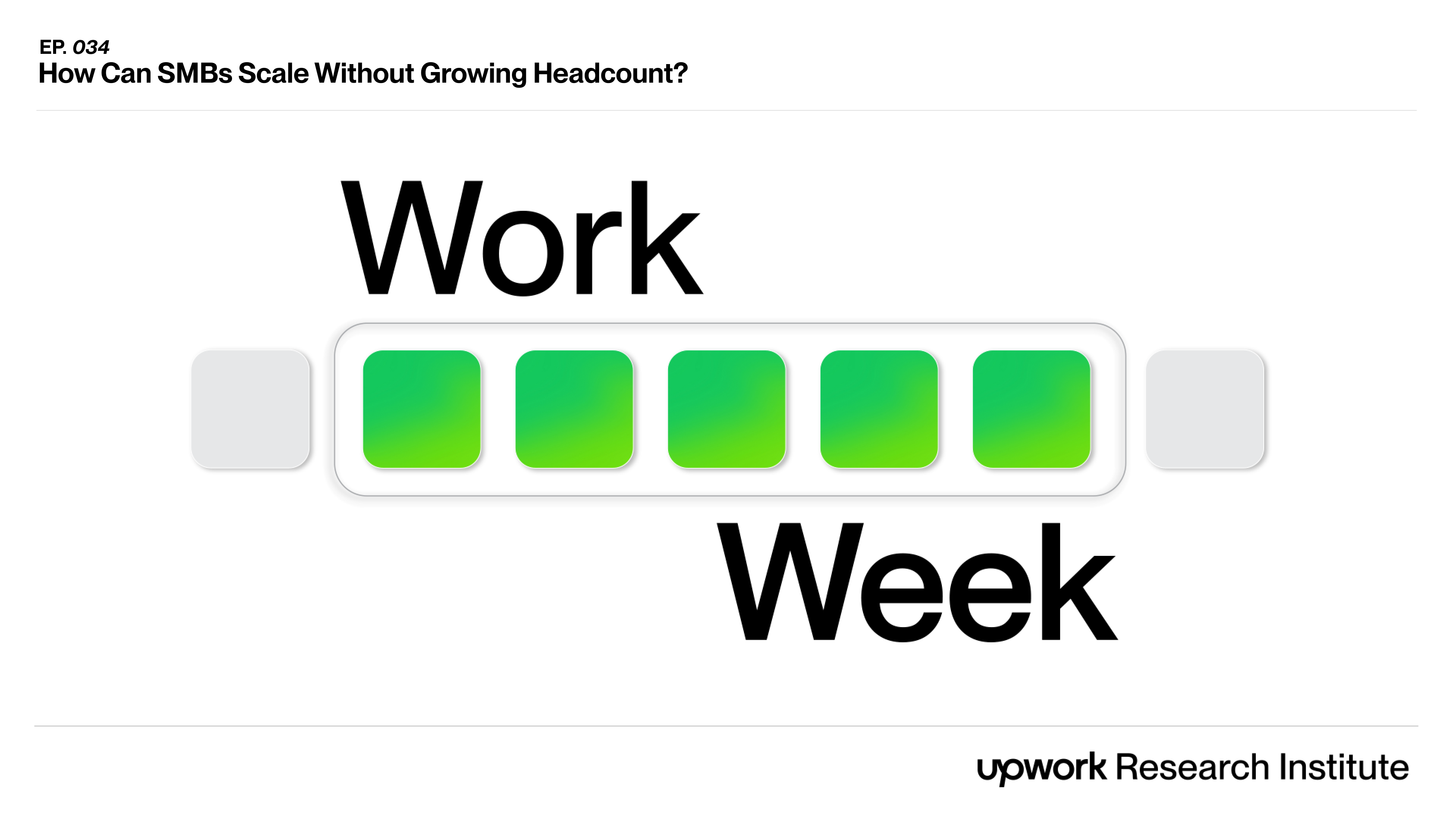


.png)

-p-500.jpg.png)

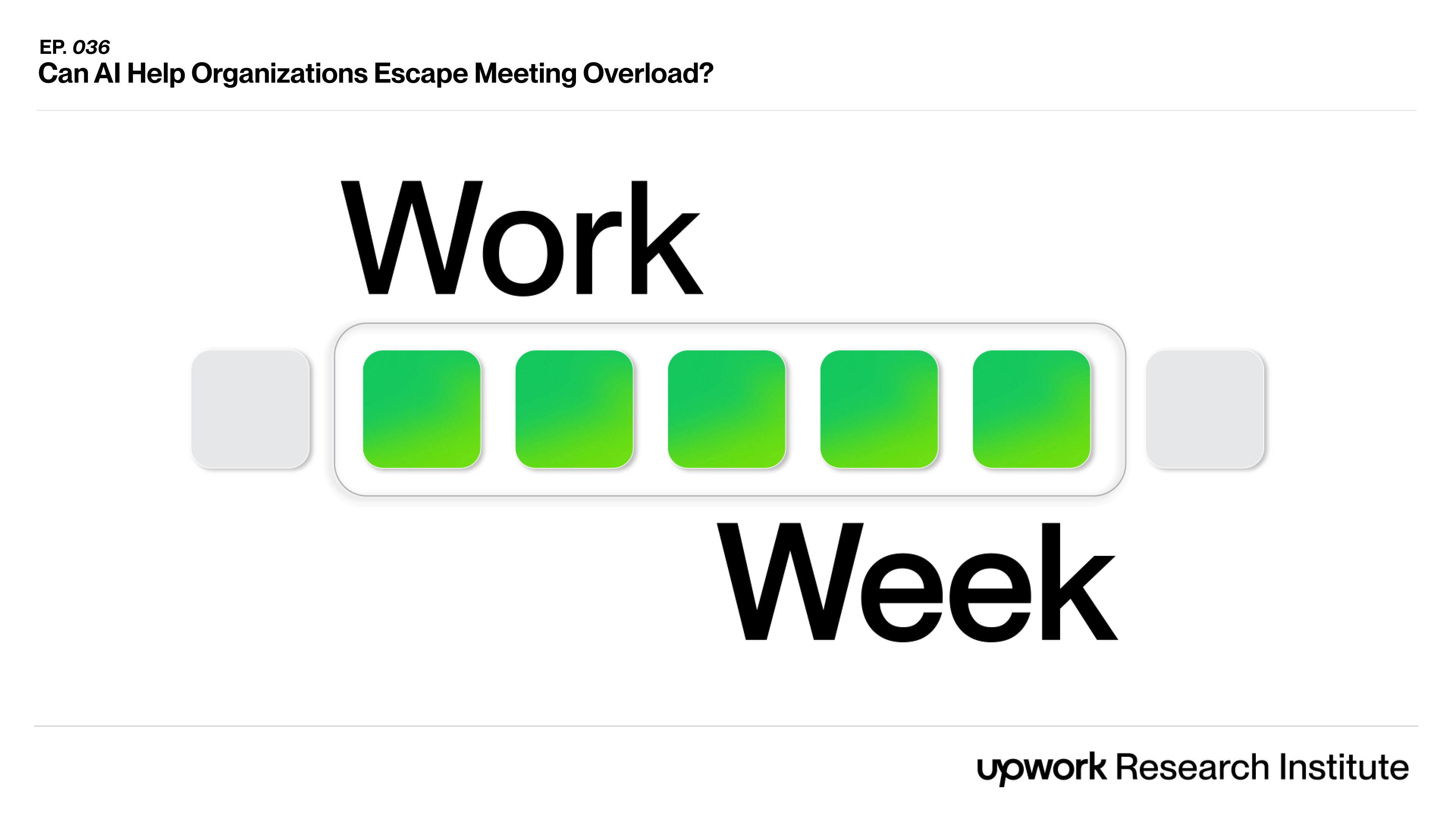

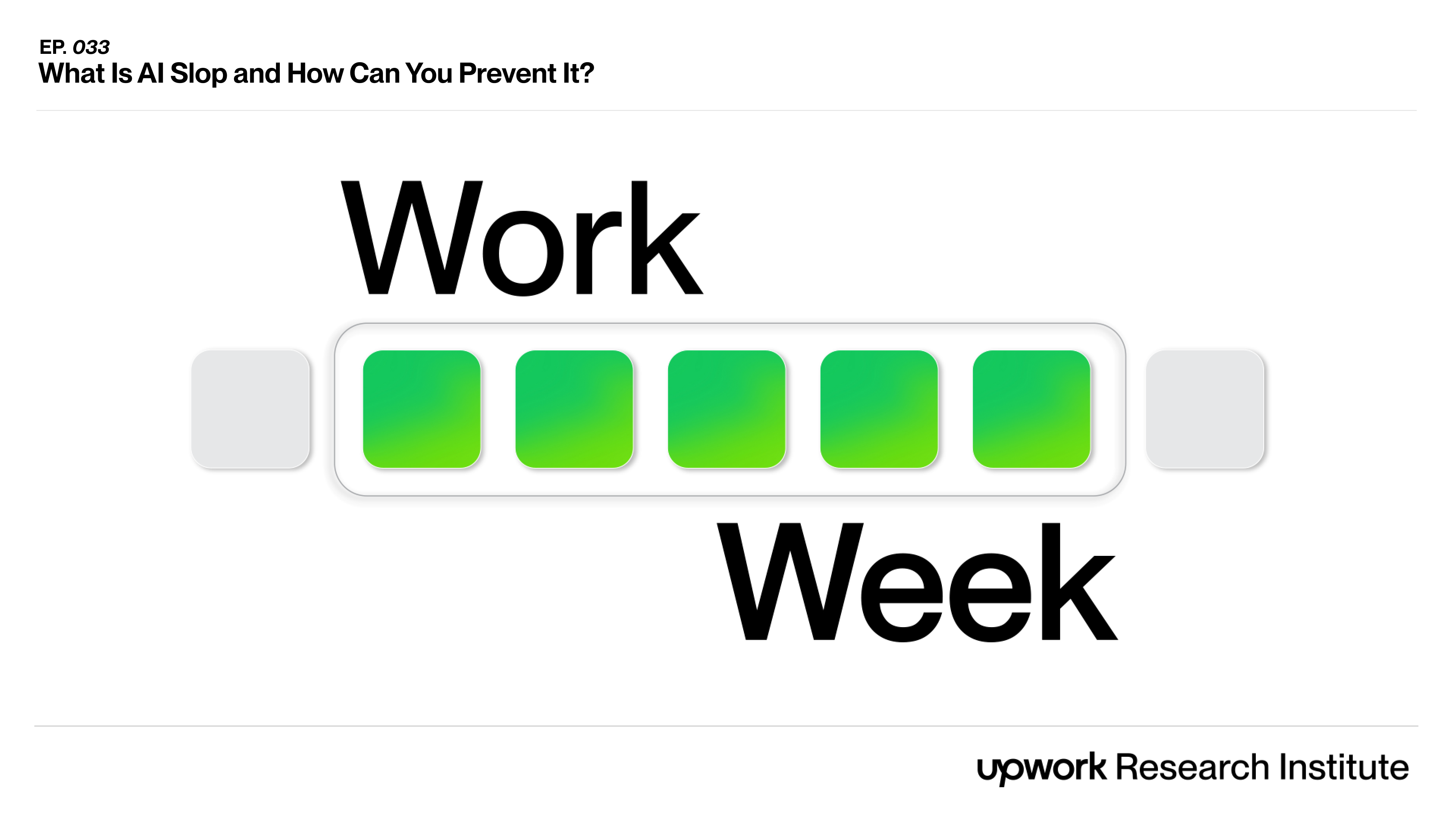
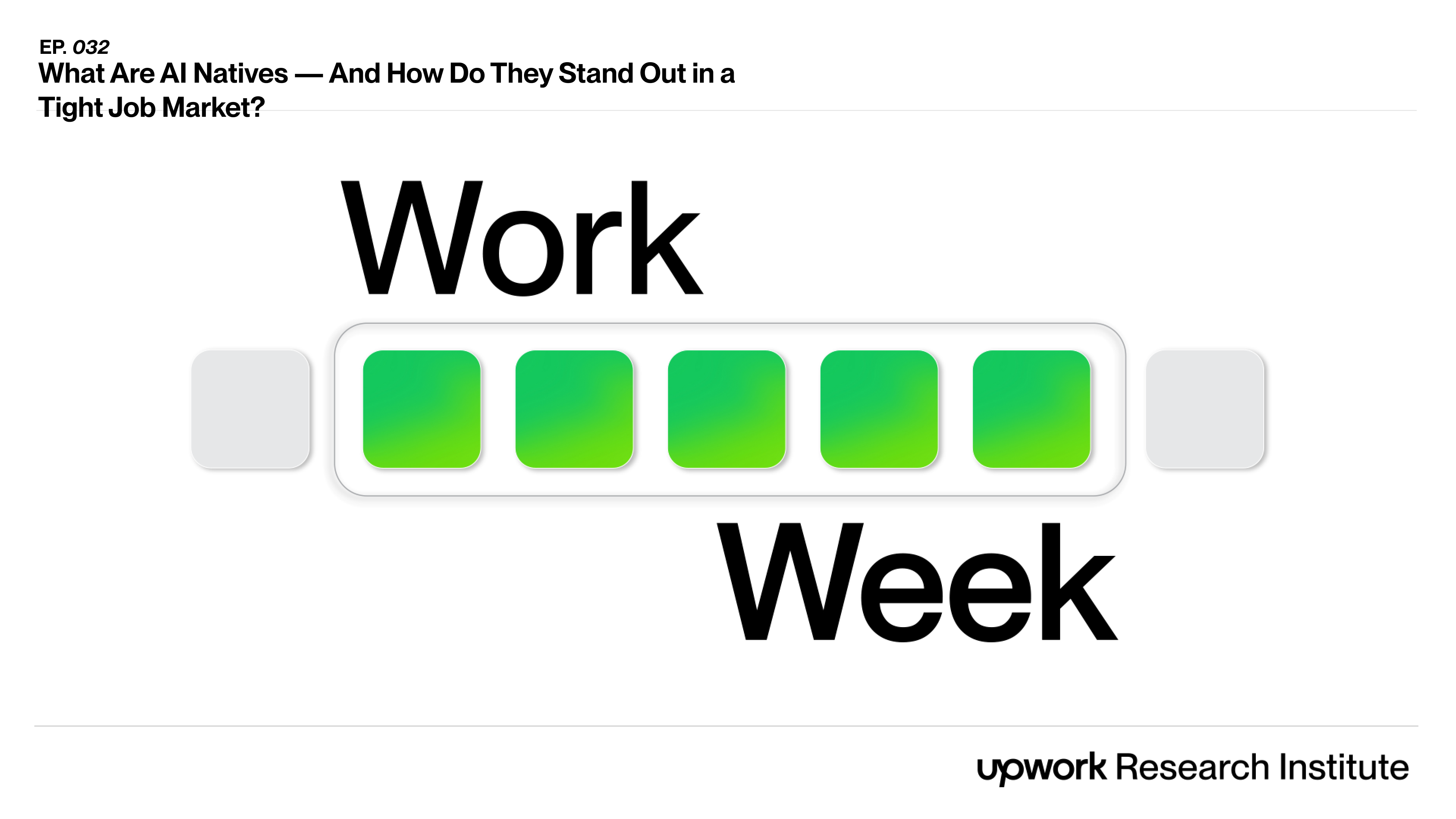


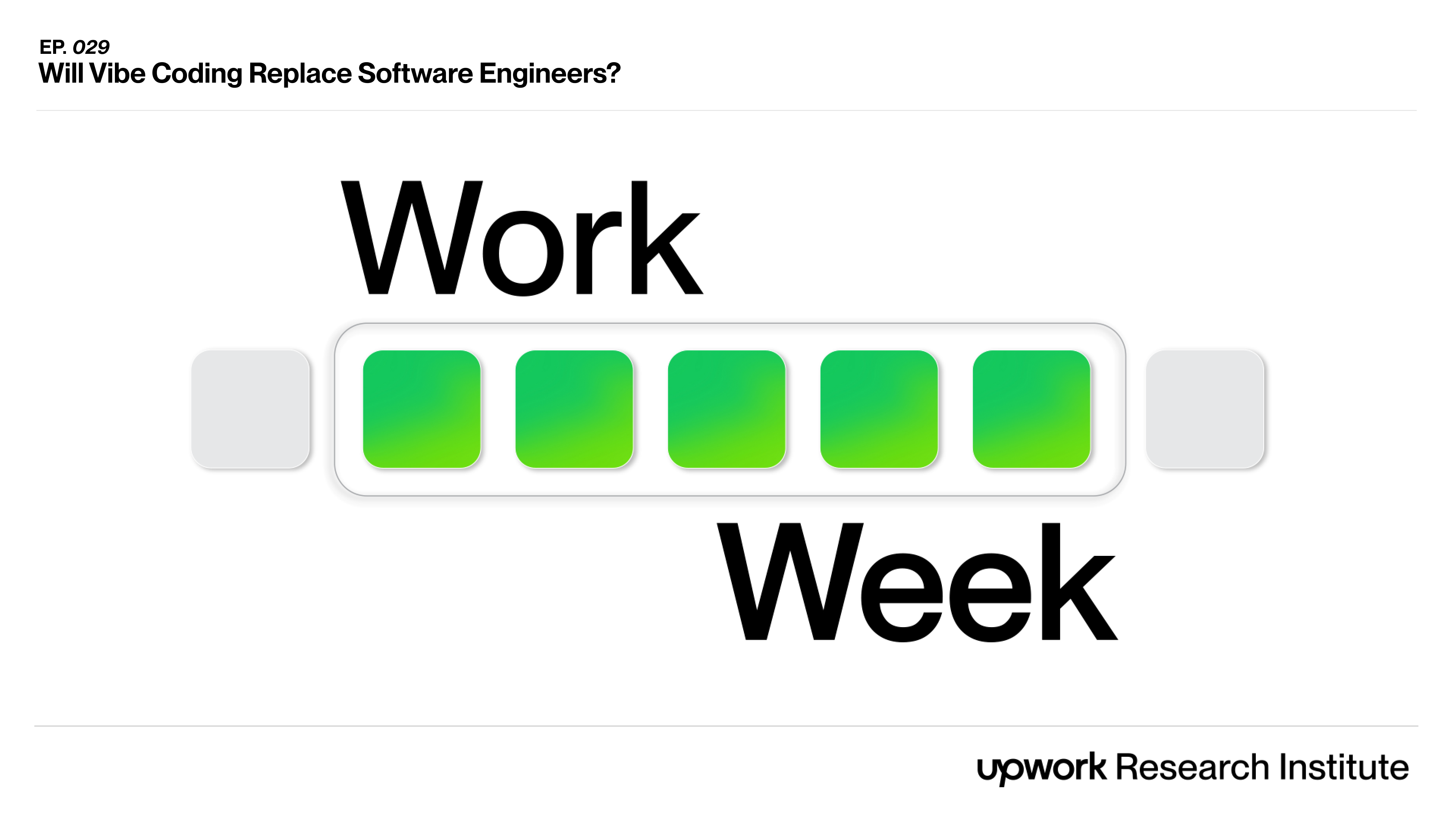


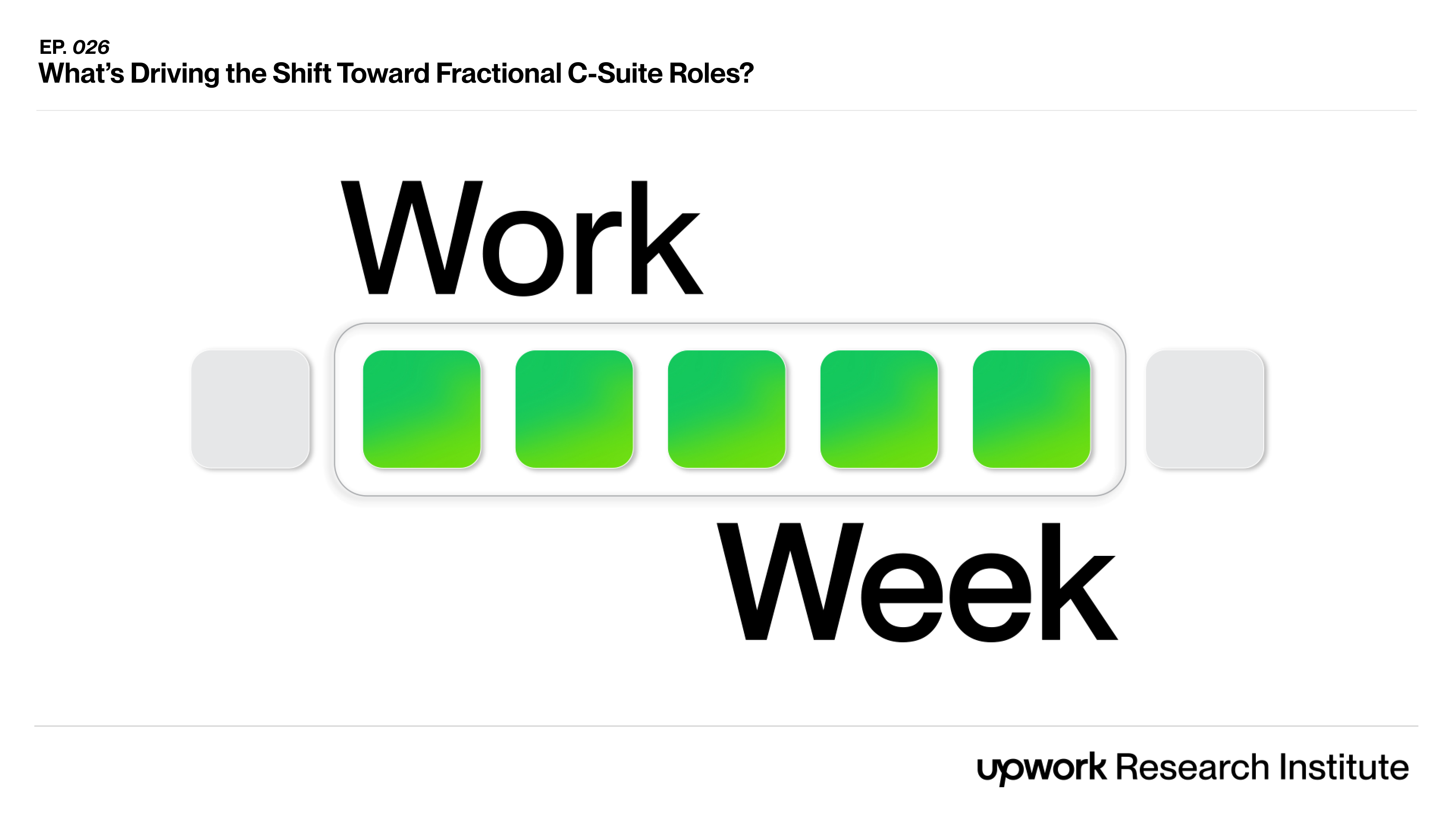
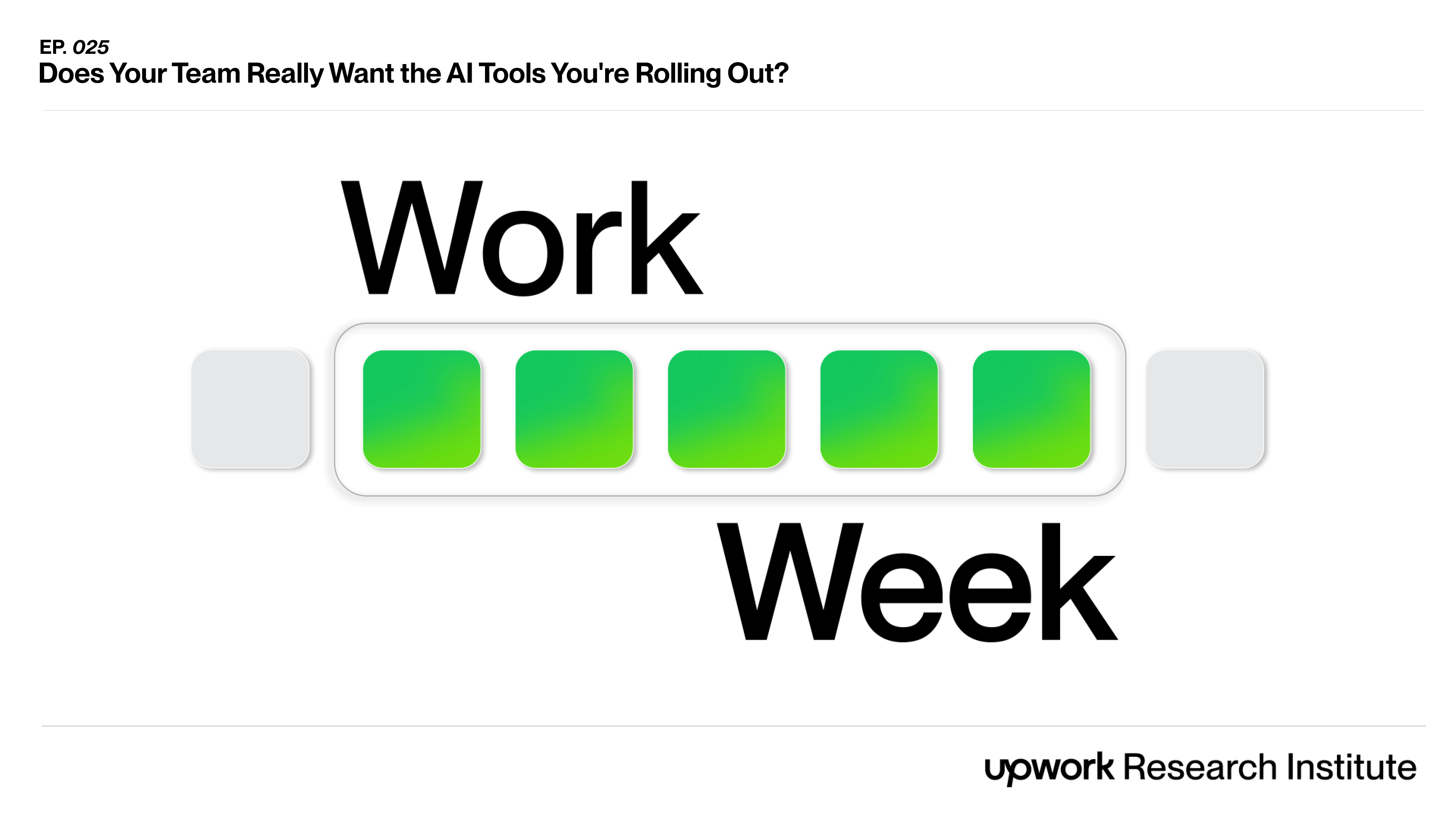

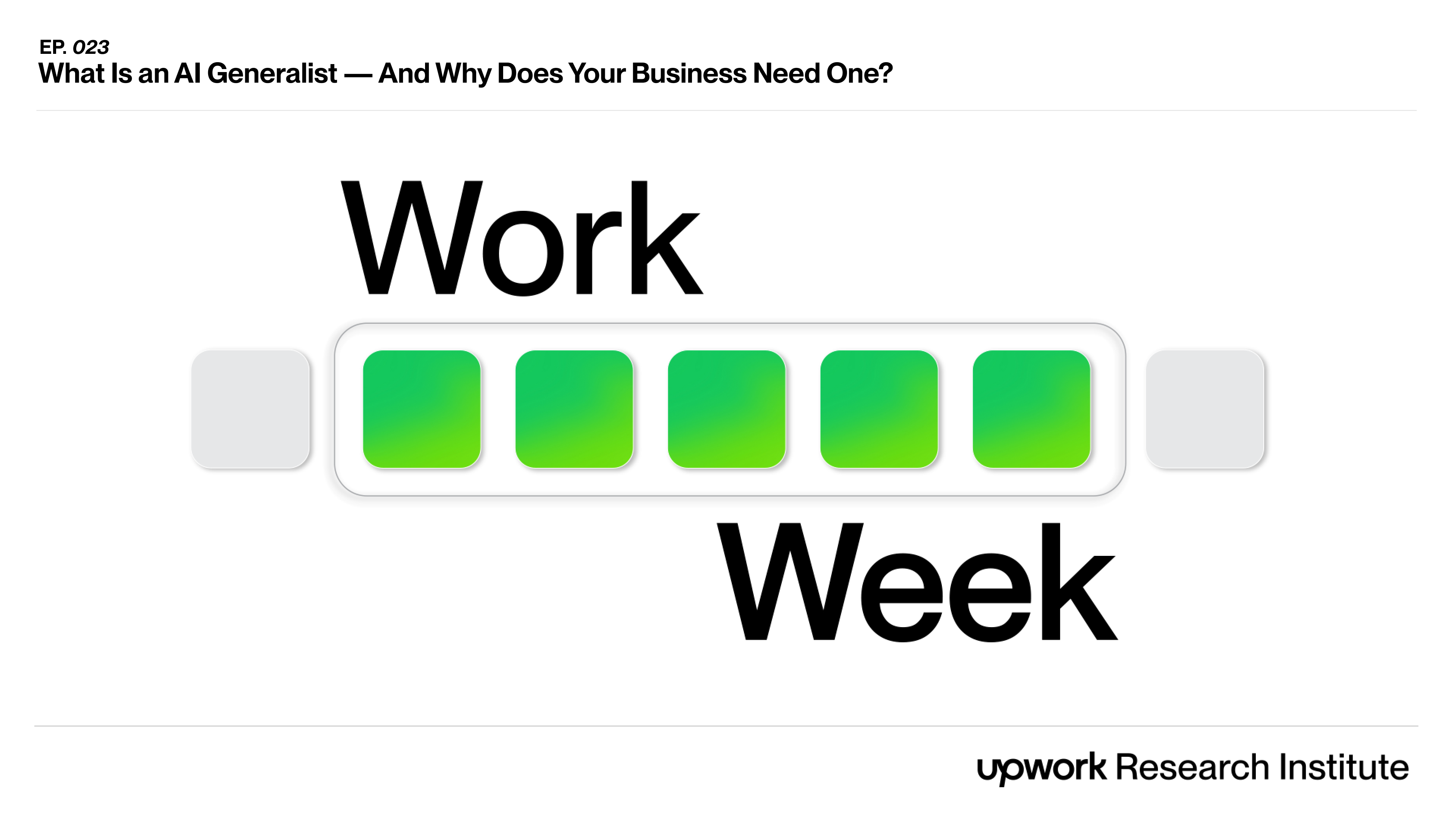






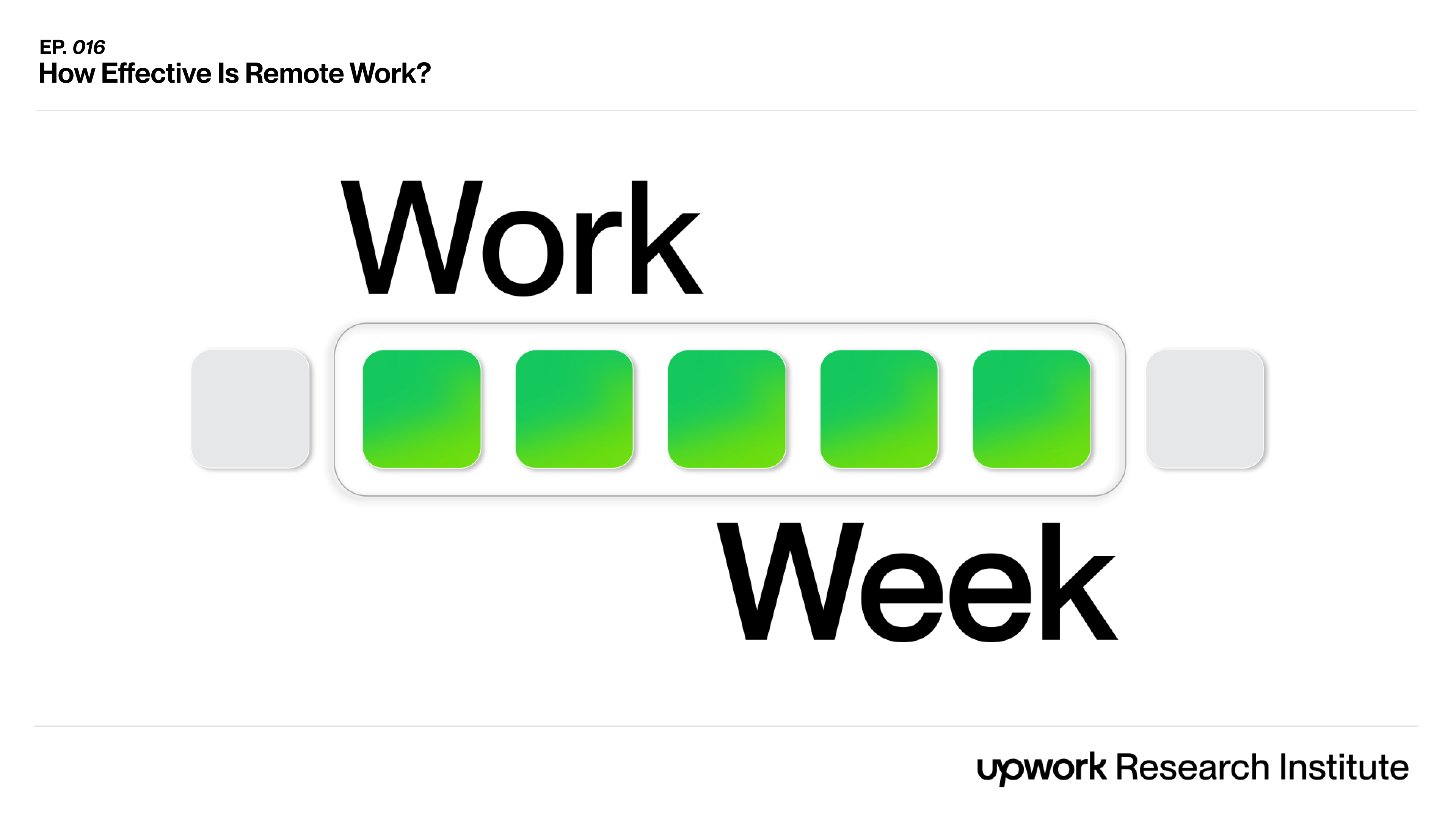
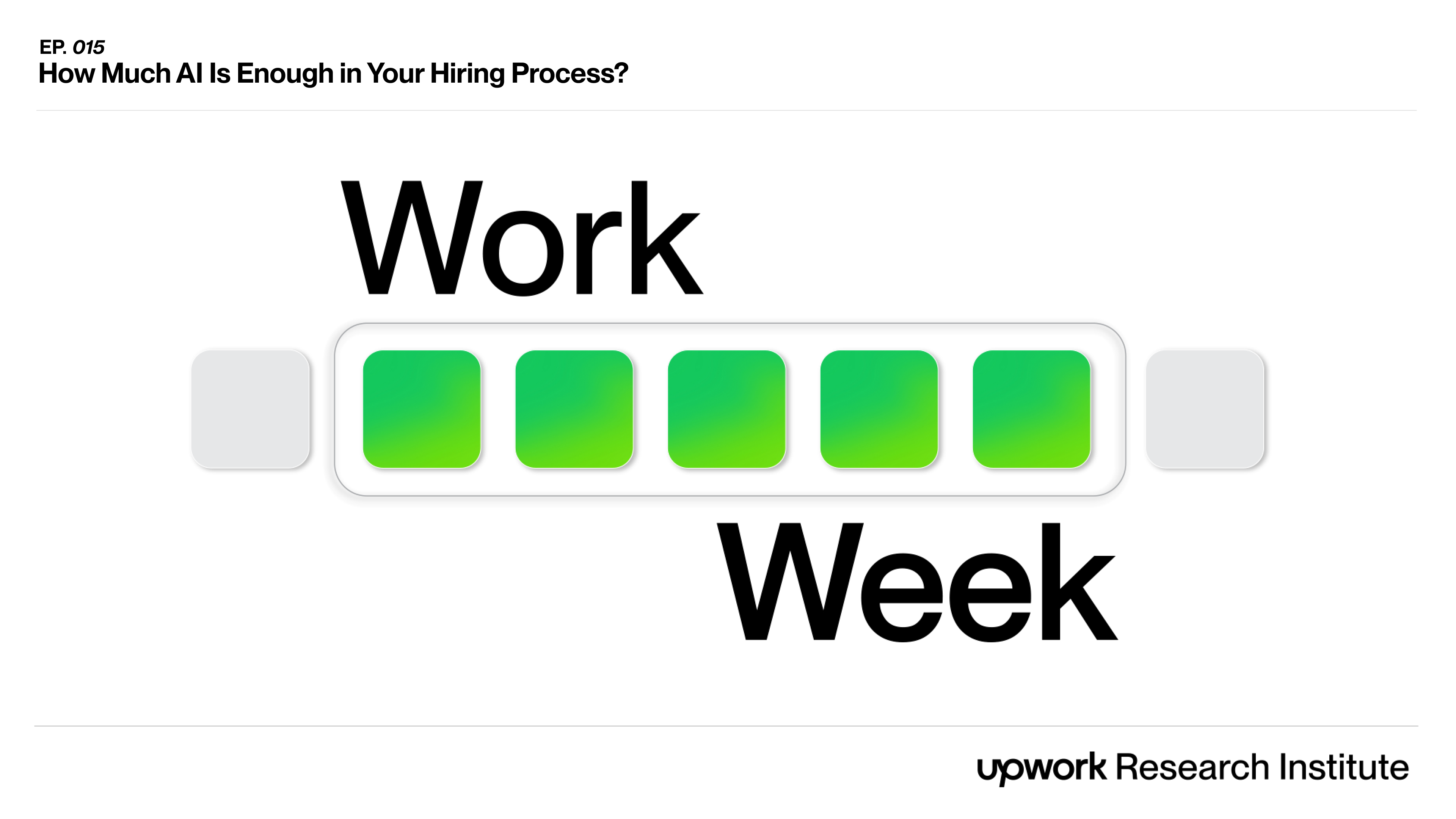

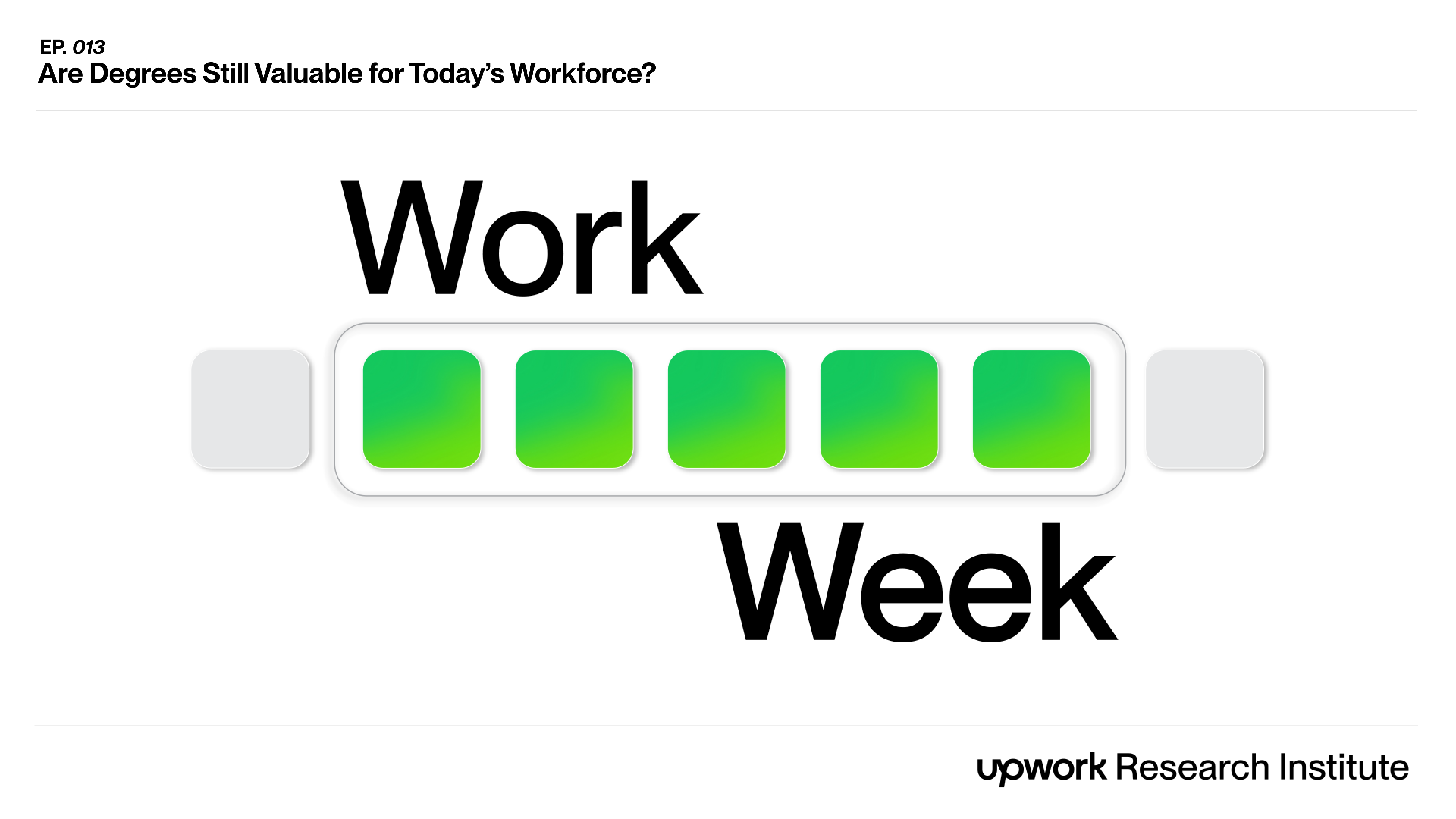
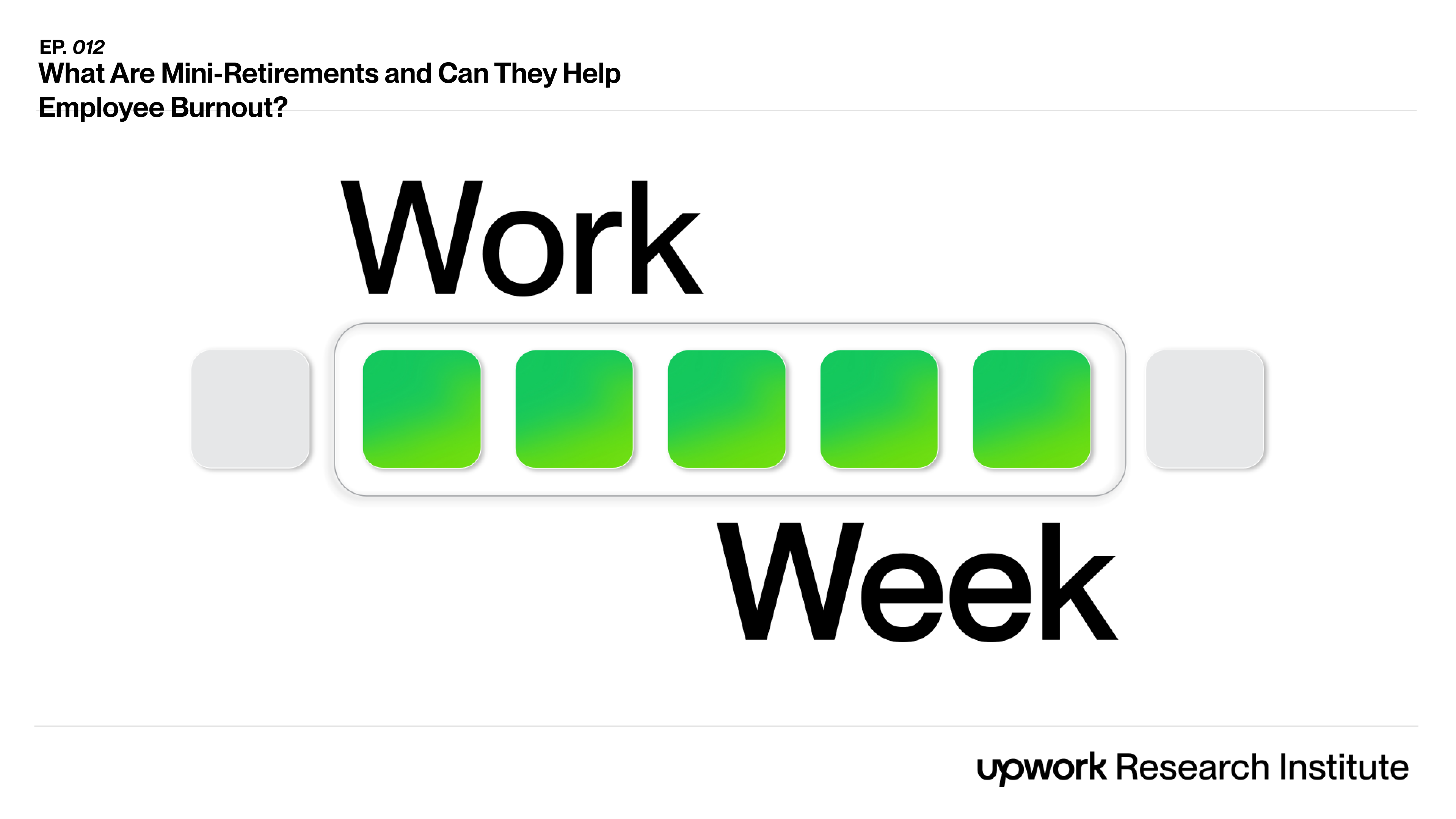
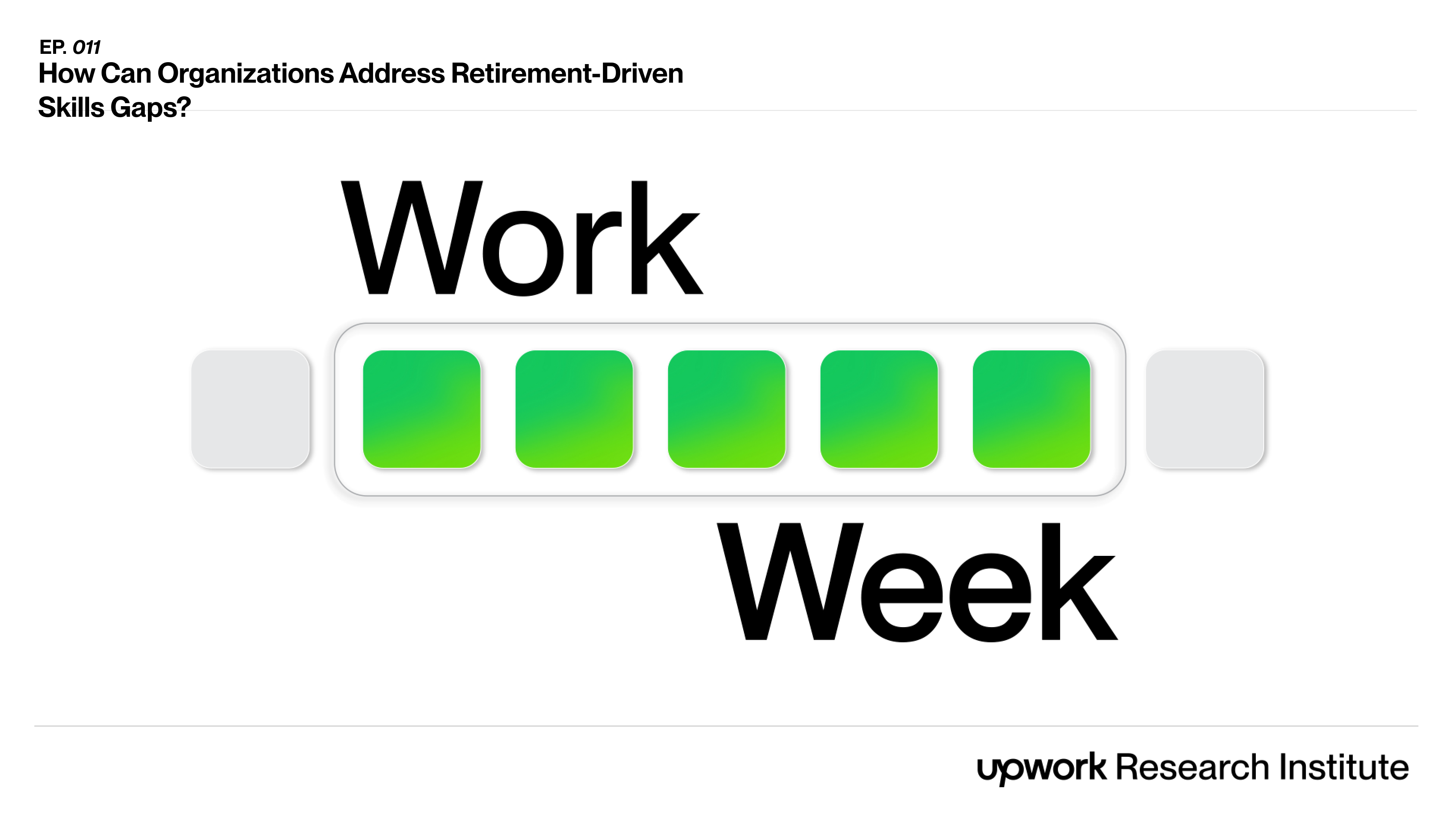

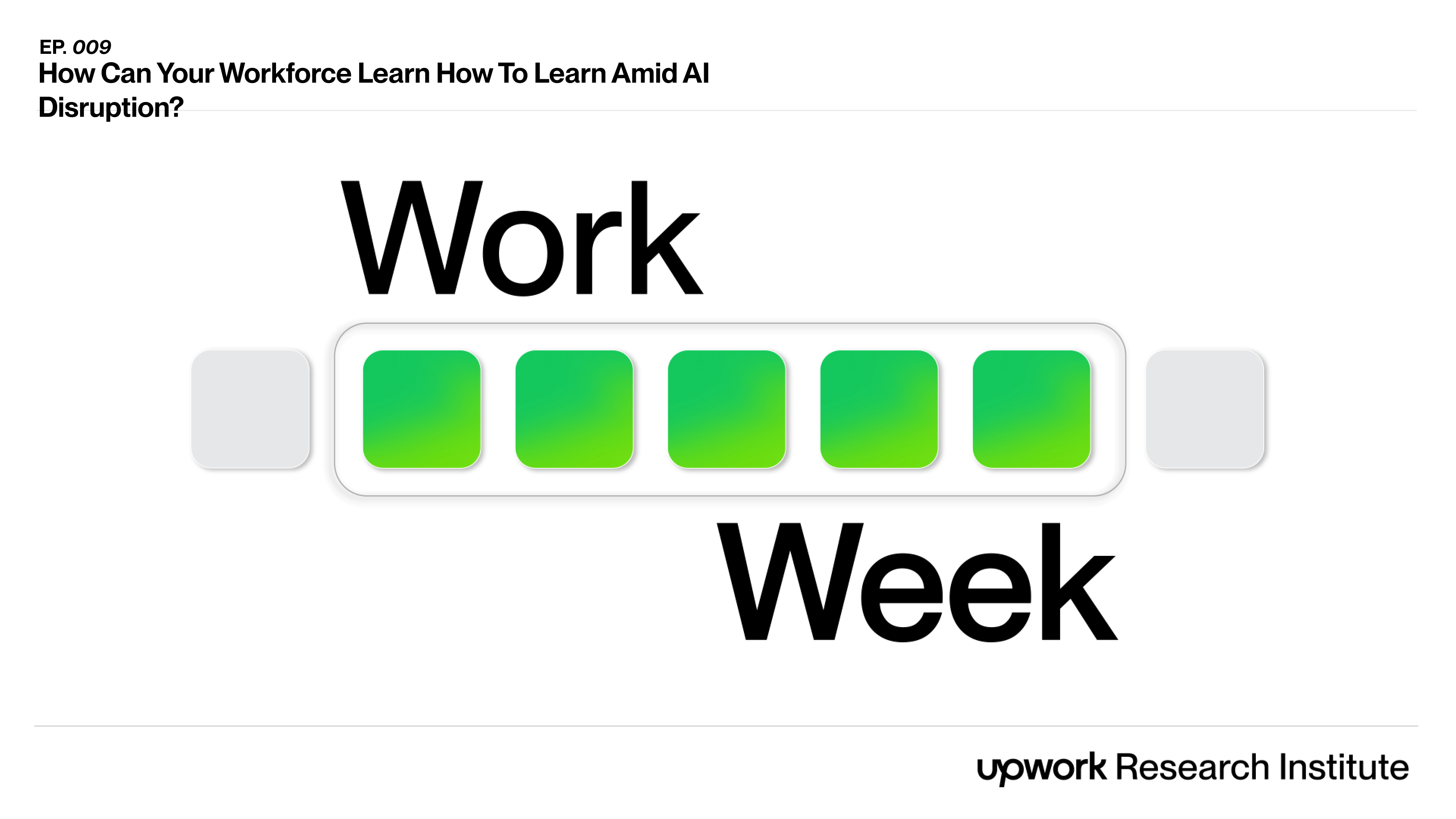

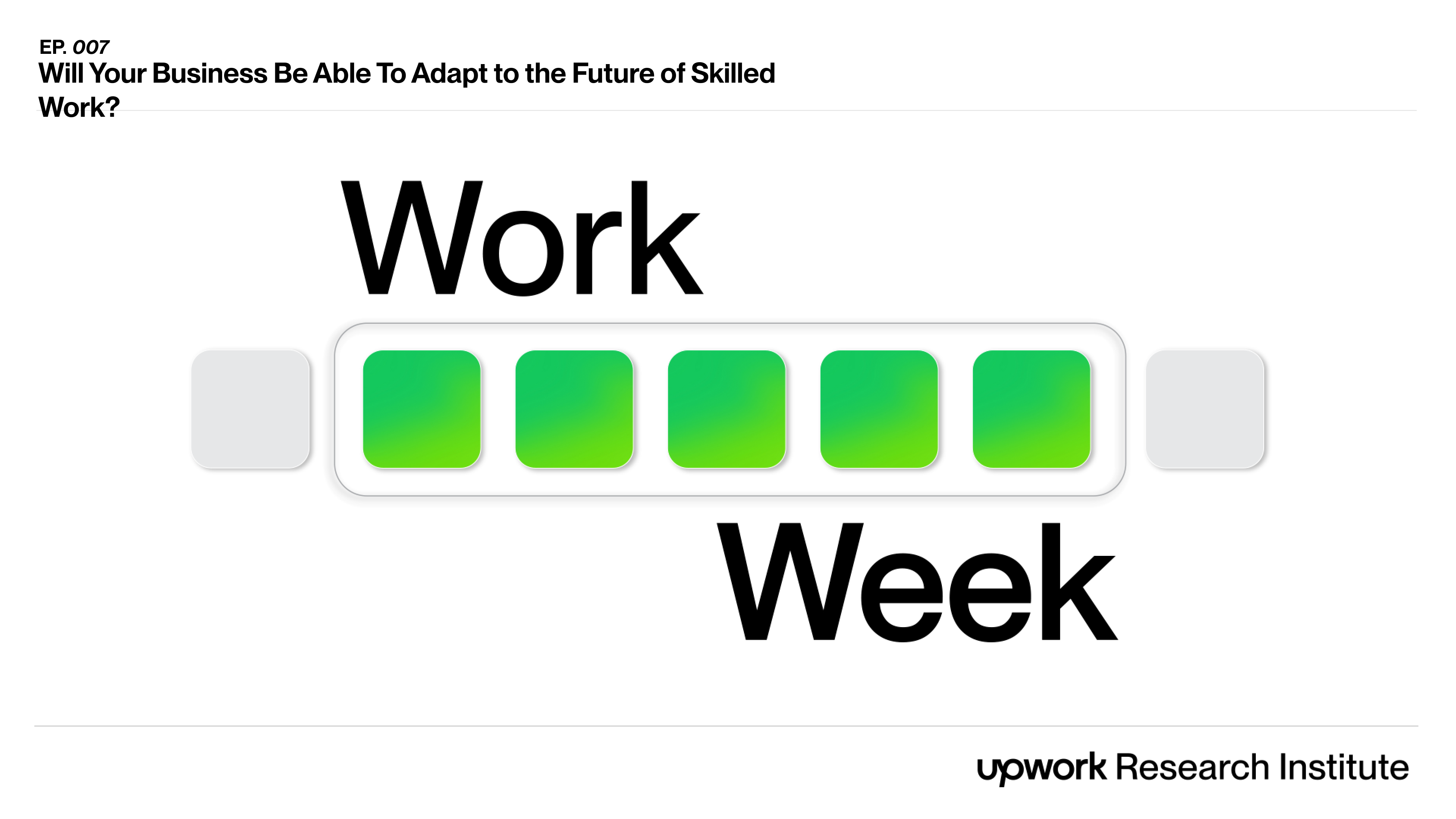
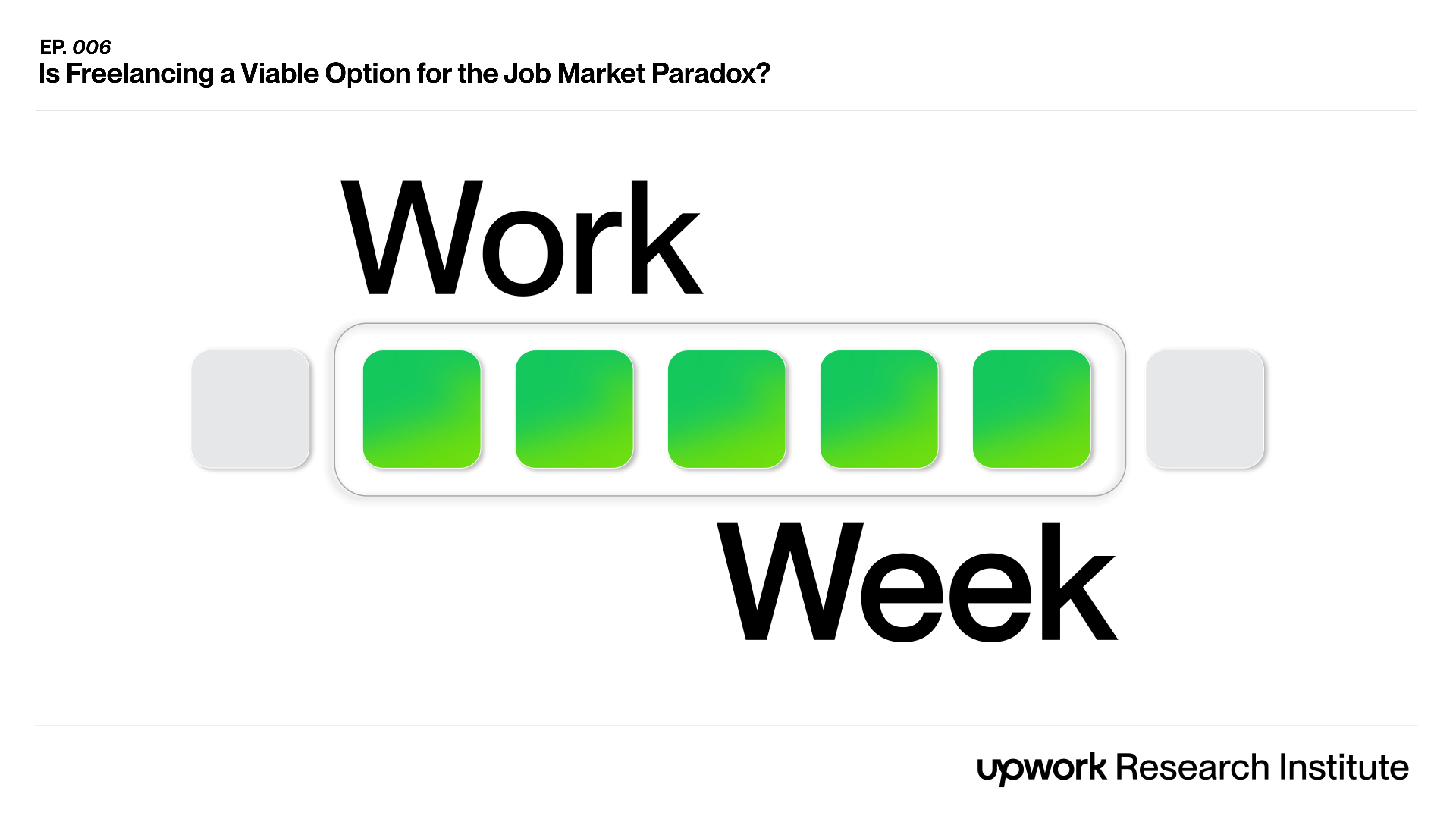
.png)


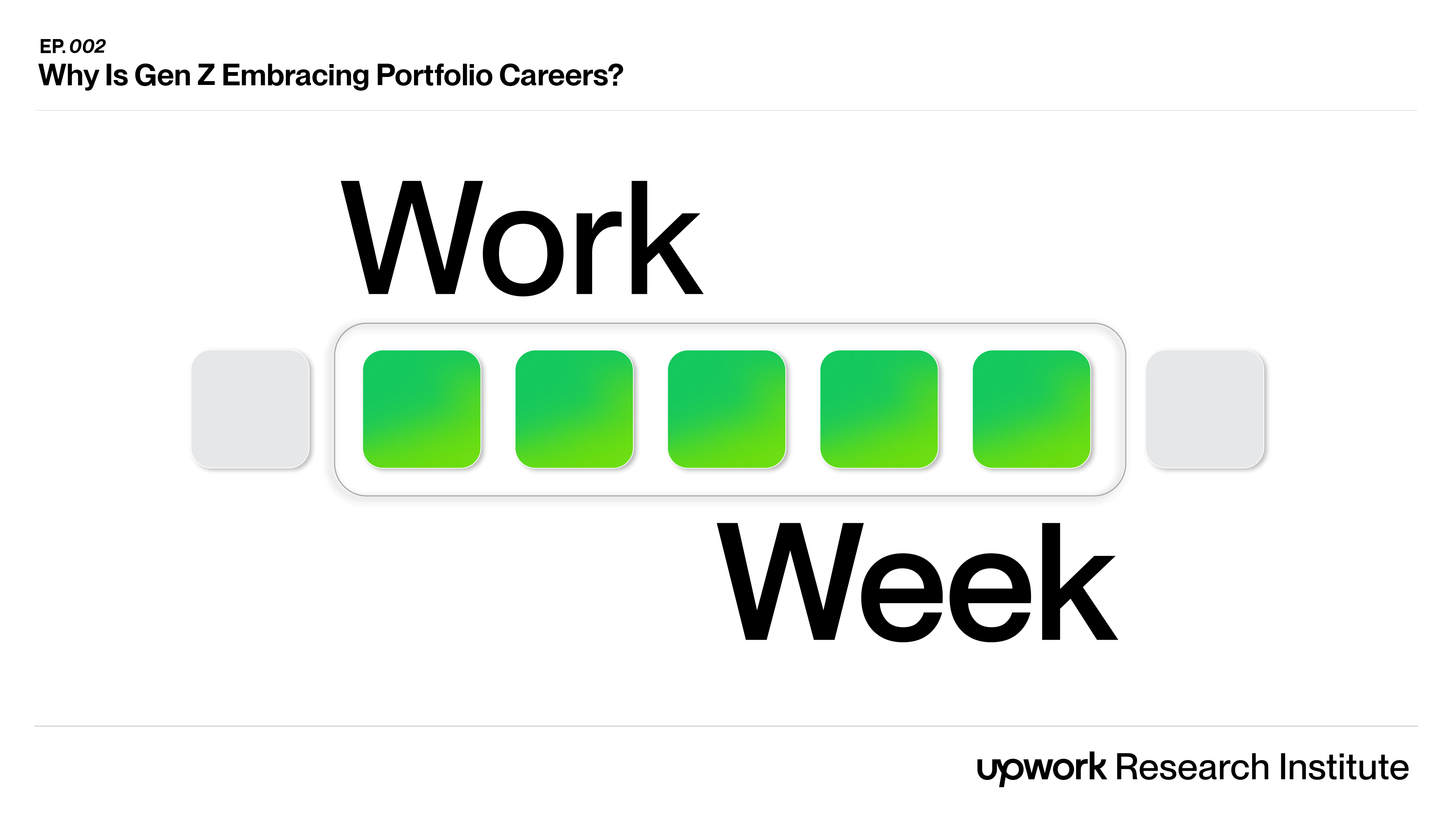
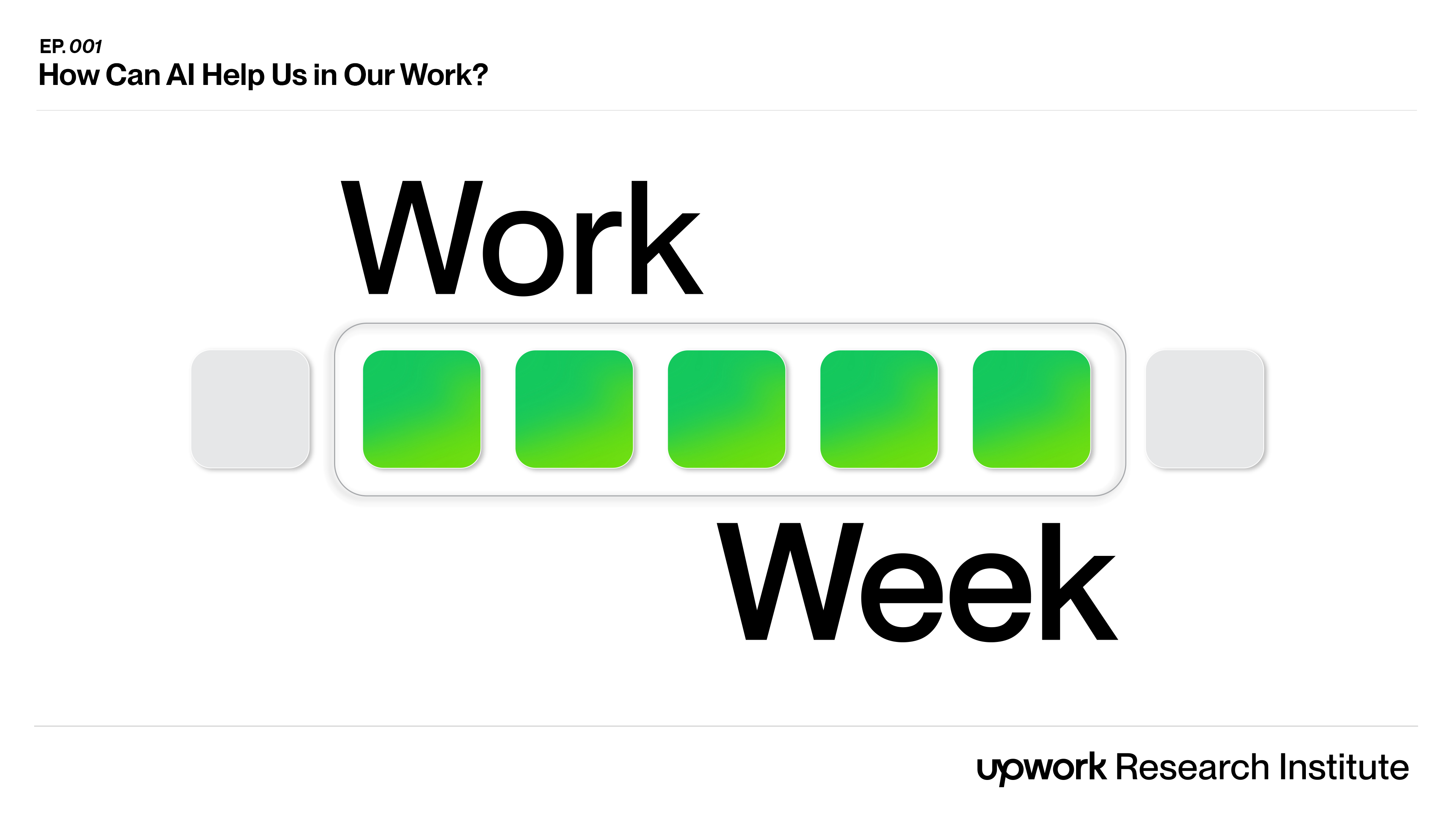
.jpg)